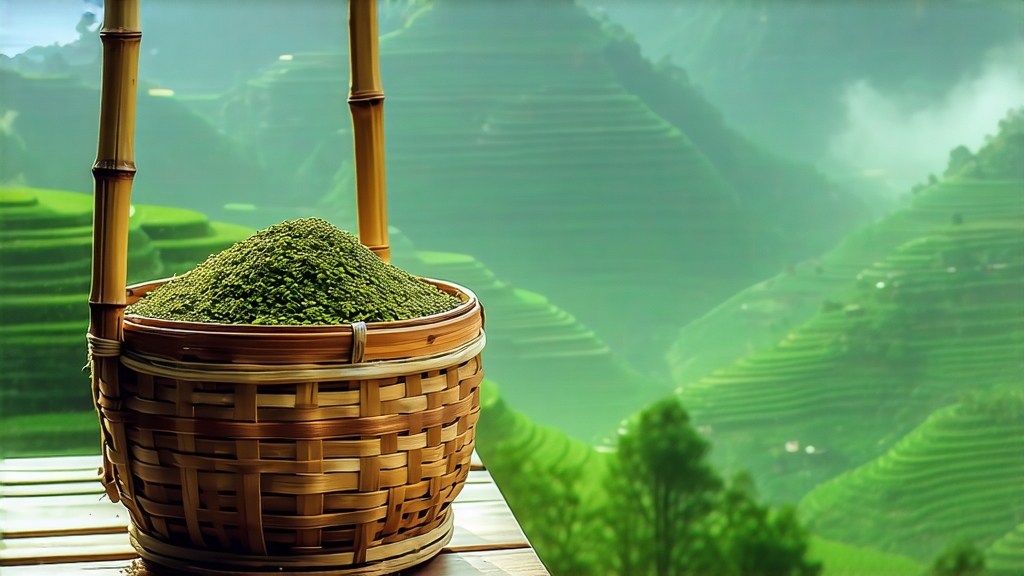
High above the Sichuan basin, where the Min River bends like a jade ribbon through perpetual cloud, lies Meng Ding Mountain, the cradle of the world’s oldest recorded tea garden. At 1,450 m, the slopes are so often wrapped in mist that local poets call them “the ink that never dries.” It is here, among terraced groves of evergreen camellia sinensis, that Meng Ding Huang Ya—literally “Meng Ding Yellow Bud”—has been coaxed into its luminous, buttery form for more than twelve centuries. Unlike the green teas that share the same peaks, Huang Ya undergoes a whisper-light oxidation sealed by a unique “sealed yellowing” step, a process so subtle it was once mistaken for alchemy.
History: From Daoist Altar to Imperial Cup
The first credible mention appears in the Tang dynasty chronicle Meng Ding Mountain Record (AD 813), which describes “a pale jade liquor presented to the throne, sweet as apricot kernel, leaving the throat cool like snowmelt.” By the Song dynasty the tea had become one of the thirteen “imperial tributes” demanded by the Emperor’s Tea Bureau; carriers raced 1,800 li along post-roads to deliver the first spring picking within twenty days. When the Ming court later shifted its favor to darker, fully-fermented cakes, Meng Ding Huang Ya retreated into monastic obscurity, surviving only because Daoist priests on the mountain used it as a meditation aid, believing its “middle way” between green and red teas harmonized yin and yang. Rediscovered in 1959 by provincial tea scientists, the cultivar was revived using cuttings from those very temple gardens, and today enjoys Protected Geographical Indication status within China.
Micro-Terroir: Where Clouds Press Against Leaves
Meng Ding’s climate is a textbook example of “high mountain, small leaf” terroir. Annual rainfall exceeds 2,000 mm, yet 70 % falls at night, so leaves remain turgid and cool throughout the day. The soil is a coarse yellow loam rich in selenium and eroded granite; its excellent drainage forces roots to dive deep, concentrating amino acids—especially L-theanine—in the budding tips. Local growers insist that true Huang Ya can only be harvested during the fifteen-day window after Qingming festival, when two leaves and a bud stretch exactly 2.5 cm, a size locals call “sparrow’s tongue.”
Craft: The Secret of Men Huan (闷黄)
While green tea is fixed to kill enzymes immediately, yellow tea invites a gentle re-awakening. The moment plucked baskets reach the cottage, leaves are spread on bamboo trays for six hours of withering under mountain breeze. Next comes a 3-minute sha qing (kill-green) at 160 °C in a slack-fired wok, hot enough to denature polyphenol oxidase yet cool enough to keep tips intact. The pivotal step—men huan, or “sealed yellowing”—follows: still-warm leaves are piled 8 cm deep inside square cedar boxes lined with wet linen. For the next 24 hours the closed lid traps residual moisture and heat, nudging non-enzymatic oxidation that turns chlorophyll into pheophytin and converts catechins into softer theaflavins. The leaf edges fade from jade to wheat, while the center remains a tender chartreuse—hence the name “two-tone yellow bud.” Finally, a low charcoal roast at 55 °C for four hours reduces moisture to 5 %, locking in a chestnut-sweet bouquet that lingers for years if stored correctly.
Grades & Styles
- Imperial Sparrow Tongue: only unopened buds, needle-shaped, downy, yielding a liquor the color of chardonnay with a distinct “green bean & orchid” note.
- One Leaf One Bud: slightly open tips, more body, a creamy texture reminiscent of steamed corn.
- Two Leaves One Bud: stronger, brisk, with a faint cocoa finish preferred by Hong Kong tea restaurants for pairing with dim sum.
Brewing: The 75-75-75 Rule
Water: spring water at 75 °C.
Leaf: 3 g per 150 ml.
Time: 75 seconds for the first infusion.
Vessel: tall glass or porcelain gaiwan to showcase the “dancing buds.” After the first pour, tilt the lid at 45° so steam escapes; this prevents stewing and preserves the signature “mountain coolness